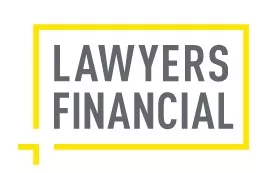
Safety first: your emergency fund shouldn't be subject to market peaks and valleys, and (like rain itself) your rainy day savings should be liquid.
Rainy day savings. According to the latest Canadian Financial Capability Survey, more than a third of Canadians don't have enough savings to cover three months of expenses in the event of a job loss or medical emergency.1
35% of Canadians aren't confident they could come up with $2,000 if they needed it next month.2
We get it: contingency plans are less exciting than investing, and several degrees less satisfying than saving for something you actually want. (Who wants a foundation when you can have a home?) But the fact is, if you don't have an emergency fund, you don't have a financial plan.
Financial wellness advocate, Saijal Patel, weighs in on how much you need—and how to find the silver lining in rainy day savings.
THE BIG QUESTION: HOW MUCH DO YOU NEED?
The size of your rainy day fund will depend on your individual circumstances, but a good rule of thumb is to have enough savings to cover essential living expenses for three to six months.
Here are some questions to help you decide:
HOW STABLE IS YOUR JOB?
According to the government of Canada's job bank, job prospects for Canadian lawyers over the next three years range from limited (in BC) to very good (in Manitoba and Yukon Territory).3 This matters, because the relative stability of your job affects how much you'll need to save. Very generally (and with no intended anxiety for West Coast barristers) lawyers in Burnaby might need a bigger safety net than lawyers in Brandon.
HOW MANY EARNERS ARE IN YOUR HOUSEHOLD?
If you're the only earner, you'll need to shoulder a higher expense burden than someone in a two-income relationship. If this sounds like you, consider a larger emergency fund to cover a more extended period in case of job loss or salary reduction.
WHAT ARE YOUR FIXED EXPENSES?
A larger emergency fund can provide a better buffer if you have high fixed costs, such as mortgage, car, or student loan payments. It can also prevent you from relying on credit cards or loans in times of crisis, which could make your financial situation worse.
HOW COMFORTABLE ARE YOU WITH RISK?
If the thought of unexpected financial challenges might cause you significant stress (or if you can feel your heartrate accelerating as you read this), you might feel more secure with a larger emergency fund.
WHEN YOU CREATE A BUDGET, WHAT YOU'RE REALLY DOING IS GIVING EVERY DOLLAR A JOB.
HOW TO GET THERE
Once you determine an appropriate level of rainy day savings, the next step is to assess your financial situation. It's important to understand what your current financial standing is so you know how much you need to save (if you're coming up short) and where you need to focus to reach your savings goal.
TRACK YOUR MONEY.
First, figure out where your money's coming from and where it's going. It might sound obvious, but most people don't track their cash flow. Write down your monthly household income. If your income fluctuates month-to-month, use a conservative three-month average. Next, list your fixed expenses (like your mortgage), your average variable expenses (like gas and groceries), and discretionary spending over the last three months.
Try it now: download your own customizable cash flow worksheet.
COURSE-CORRECT A SHORTFALL.
If you don't already have a three-to-six-month safety net, you'll want to assess why you're falling short. One of the easiest ways to shore up cash is to identify non-essential expenses (discretionary spending) that you can temporarily cut or reduce. This might mean dining out less, cancelling subscription services, or finding more cost-effective alternatives for your regular purchases.
Another strategy is to pay yourself first. Set up automatic transfers from your chequing account to your savings account. This way, a portion of your income is saved before you even have a chance to spend it.
MAKE A BUDGET.
More than 6 in 10 budgeters have emergency savings compared with only 4 in 10 of people who don't keep track of their spending.4 When you create a budget, what you're really doing is giving every dollar a job and actively deciding how you want to spend your money rather than winging it without a purpose. Apps like Spending Tracker, YNAB, or even a simple spreadsheet can help you track your spending and savings.
SET REALISTIC GOALS.
While having three-to-six months' worth of living expenses is a common benchmark, it might not be achievable for everyone all at once. Set small, achievable milestones and build momentum. Aim to save one month's worth of expenses initially, and then gradually increase your target.
LIKE RAIN, RAINY-DAY SAVINGS SHOULD BE LIQUID
Saving for retirement isn't the same as saving for a rainy day. Your emergency fund should be liquid and safe—meaning it shouldn't be locked up in investments that are risky or hard to access. You want to ensure you can quickly use it when it's needed. Also, remember this isn't a "one and done" goal. At some point, you'll use a portion of the savings and will need to replenish it. Make saving a habit. Even if you can only contribute a small amount regularly, the consistency will add up over time and before you know it, those regular contributions will grow to a large, sustainable pot of cash.
Footnotes
1. Financial Consumer Agency of Canada: 2019 Canadian Financial Capability Survey.
2. Financial Consumer Agency of Canada: 2019 Canadian Financial Capability Survey.
3. jobbank.gc.ca: "Job Prospects – Lawyer in Canada," as of November 21, 2023.
4. Financial Consumer Agency of Canada: 2019 Canadian Financial Capability Survey.
The content of this article is intended to provide a general guide to the subject matter. Specialist advice should be sought about your specific circumstances.

